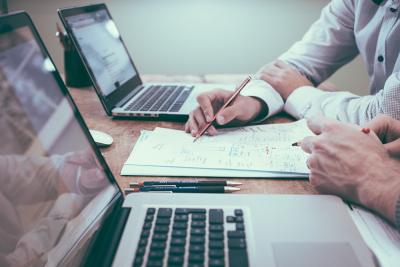There are plenty of reasons for libraries to collaborate. Partnering with other organizations and people increases your resources, increases your reach, promotes creativity, models teamwork for others, and helps your community work toward common goals. Lest we forget, libraries have a lot to offer our partners, too; we are trusted, well situated for exposure and usually pretty competent in marketing our programs and services.
Collaborations are especially important for small and rural libraries. At Perry Public Library, we find them so valuable that we strongly encourage all full-time staff to participate with a civic or community group, attending meetings on work time, as a library representative. My staff is a great addition to any board because they all have great organizational and critical-decision making skills; their community involvement reflects well on the library and promotes outreach into the community.
Even one-person libraries will benefit from volunteering on local boards or joining a community service organizations like Kiwanis, Rotary, Lions or Elks. Of course, getting to this point can be of a bit of a catch-22. If you have limited resources and a small staff, partnerships can help fill gaps in your programming. But how can you find the time to create and foster the relationships? Here are three simple ways to get started.

New at this? Start with schools
The first natural partnerships for libraries — and a great place to get your "partnership feet" wet, so to speak — are with your local schools. Bringing story time programs to preschools and elementary schools requires very little effort and can reap broad exposure to potential library users while furthering the library’s literacy goal. Anytime the library can capture children’s attention and introduce them to the wonder of books is invaluable.
Preschools and schools usually like the children’s librarian coming into their facility because it is a great, high-quality, free program — and because the children are exposed to another community advocate promoting reading and the wonder of books.
Make a list of your resources
Even the tiniest community has government entities, community groups or educational institutions that can be tapped for programming. Think about the existing resources in your community and how they could align with your strategic plan, goals and key areas of interest your library serves.
If you have a goal of understanding the past, you may want to talk to the local historic preservation group, the cemetery association, the local museum in your town, and the town or county or state genealogy society. If your goal is to increase STEM programs, check out your local Area Education Association, the State Department of Education, other libraries that have implemented STEM programming, local businesses based on science, math or engineering, local science teachers, your state or local Department of Natural Resources, or your county Conservation Board.
The hospital may not spring to mind as a natural partner. However, in the case of increasing awareness of health issues such as diabetes or heart disease, the hospital may have an education program that you could partner and host at the library. Having the program at the library may suit the hospital in broadening their audience and raising awareness of these health problems.
Another great partner is your state land grant university extension outreach department. In Iowa, we have the Iowa State University Extension and Outreach Coordinators. They teach anything from financial literacy, financial decisions for every stage of your life, babysitting basics, nutrition for all ages, cooking classes, child safety and more.
Don't forget your customers
The last group I want to mention are your patrons. Most patrons have something they collect, something they do, something they know about (sometimes in great detail), and something that they can talk about or teach or demonstrate.
Our library has a LifeLong Learning program in which we have hosted a fair number of patrons doing what they do best — including baking bread, making cakes, crafting, smoking meats, tying flies, glamping (glamorous camping), storytelling, model railroading, fishing, astronomy (when the eclipse happened) and beer brewing. Give these folks a platform from which to share their knowledge and you are both creating learning opportunities and building community.
The library is uniquely located in all communities. Creating partnerships with other organizations, businesses, and other city departments can yield great benefits. In using collaborative partnerships, the library demonstrates how working together makes a difference in your community.
Mary K. Murphy is the director of the Perry Public Library in Perry, Iowa. This blog post is part of a series, organized by Iowa State Library, exploring programming in small libraries throughout the state.

